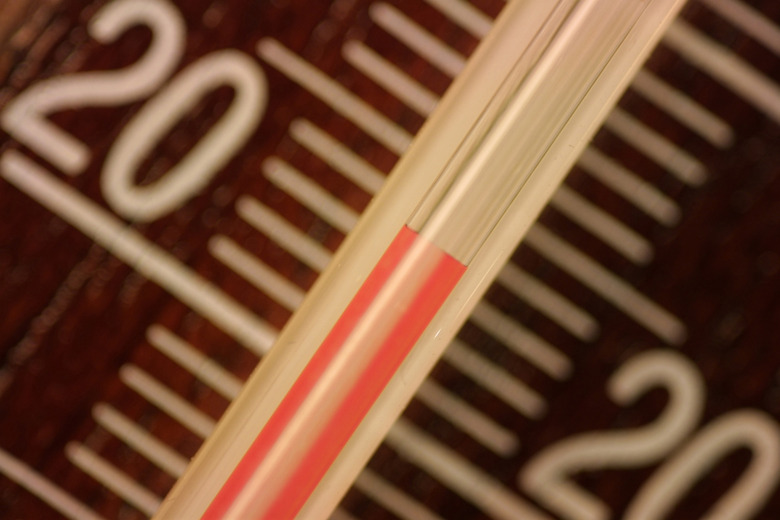How To Do A Simple Calorimeter Experiment
Most students will already know that a spoon in a foam cup of cocoa gets hot but the cup does not because heat is transferred more easily to the spoon. A calorimeter is also made of an insulated cup that limits the heat lost from the system even more than a regular foam cup. This allows students to complete accurate heat transfer experiments. Heat and temperature are not the same things. Heat is the total energy of a material, calculated by multiplying temperature, mass and the specific heat of the material. Since heat energy is transferred when mixing materials, the rate of heat exchange between the two materials depends on the mass and specific heat of each material.
Basic Calorimeter Experiment: Heat Transfer of Water
Step 1
Measure the mass of the empty calorimeter with a balance. Record on a data table.
Step 2
Pour cold water– no ice– into the calorimeter until it is one third full. Find the total mass of the calorimeter and cold water. Record mass on data table.
Step 3
Put the lid on the calorimeter and push a thermometer through the slit in the lid. Make sure the thermometer reaches the water.
Step 4
Repeat steps one, two and three, this time using hot water. The hot water should be a minimum of 50 degrees Celsius.
Step 5
Pour the hot water from the Calorimeter into the cold water in the second Calorimeter. Quickly close lid to reduce unwanted heat loss.
Step 6
Push the thermometer through the hole in the lid and observe the temperature of the mixed water. Once the temperature stops changing, record in data chart.
Step 7
Repeat the experiment twice with different masses of water.
Step 8
Complete calculations to find the total mass of hot plus cold water. Calculate the temperature change of cold water after mixing. Repeat with hot water data.
Step 9
Using this information, calculate the heat energy of the cold water by using the following equation: Heat energy of cold water equals the mass of cold water multiplied by temperature change of cold water, multiplied by the specific heat of water which is one calorie per gram. Repeat with hot water, using hot water data to determine it's final heat energy.
Step 10
Find the heat energy of the mixed water by calculating the mass and temperature of the mixture and multiply by the specific heat of water.
Things Needed
- Calorimeter with lid
- Balance
- Thermometer
- Hot water– minimum of 50 degrees
- Cold water– ice water with ice removed
TL;DR (Too Long; Didn't Read)
The specific heat is the amount of heat required to raise the temperature of a gram of the material by one degree Celsius.
Extend this experiment by transferring hot metal washers into a cup of cold water keeping in mind every material has its own specific heat. Extend by adding different amounts or starting temperatures of hot or cold water to show that temperature and mass effect heat transfer.
Warning
Use safety glasses and heat resistant gloves.
Cite This Article
MLA
VanBuren, Jennifer. "How To Do A Simple Calorimeter Experiment" sciencing.com, https://www.sciencing.com/simple-calorimeter-experiment-14662/. 24 April 2017.
APA
VanBuren, Jennifer. (2017, April 24). How To Do A Simple Calorimeter Experiment. sciencing.com. Retrieved from https://www.sciencing.com/simple-calorimeter-experiment-14662/
Chicago
VanBuren, Jennifer. How To Do A Simple Calorimeter Experiment last modified March 24, 2022. https://www.sciencing.com/simple-calorimeter-experiment-14662/

